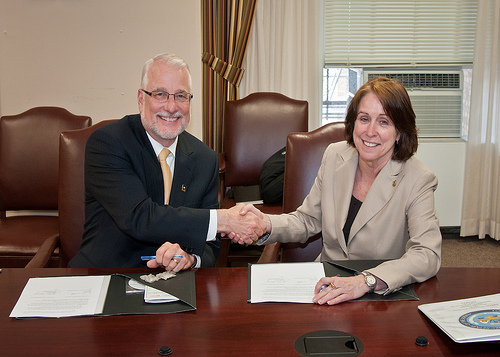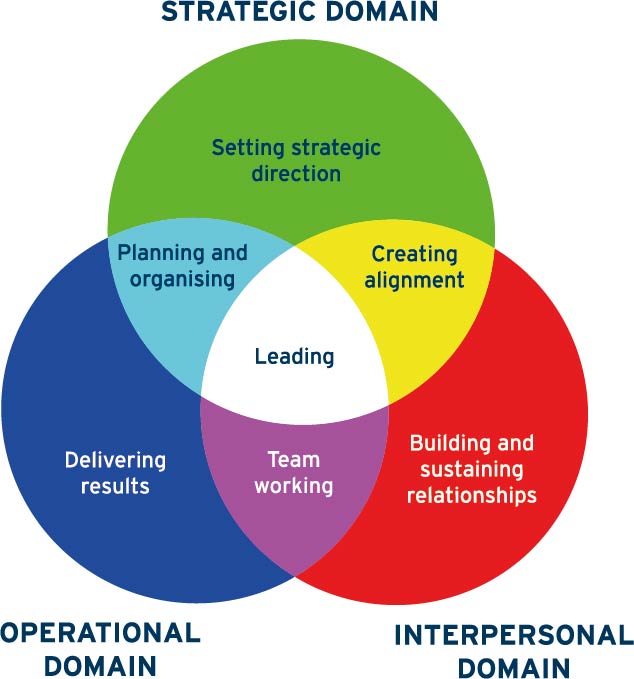So you’re a leader – What do you actually do?
March 31, 2014
Much has been written about leadership and leaders. Are they born or made? Can you teach leadership? What are the characteristics of a great leader? And so on and so on. What is frequently omitted, however, is the question ‘What does a leader actually do?’. What is the job of leadership? It’s as though we think the answer is obvious, but it’s not. When this question is addressed, the focus is often on the aspects of leadership related to people, such as how to inspire others to follow you. But there is more to leadership than this. It’s useful, for example, to work out which direction to go in the first place.
A relatively recent leadership model, based on years of research (which just this week was short listed for a Business Psychology award) takes a much broader perspective. The Primary Colours leadership model, developed by psychologist Dr David Pendleton – and owned by his consultancy, Edgecumbe – covers three major areas of leadership and the interaction between them. It also demonstrates, incidentally, that psychologists are not just interested in the ‘touchy feely’ stuff. So if you’re in a leadership position, you might want to think about how much time you spend on each of these leadership tasks. Chances are you’ll gravitate to some more than others.
The Primary Colours of Leadership
As you can see there are three major areas (or ‘domains’) where leadership is required – strategic, interpersonal and operational. You could think of them as ‘head, heart and hands’. Each domain has its own tasks. There’s also an additional task which overlays the whole model, Coping With Pressure. You’re not much use as a leader if you become a wibbly mess in the corner during a crisis or throw your toys out of the pram if someone disagrees with you.
Where are you going and how will you get there?
Let’s start with the strategic bit. One of the first tasks of leadership is Setting Strategic Direction. Whether you’re leading a small project or a multi-national corporation, you need to know where you’re going, how you’ll know when you’ve got there and, maybe, what you’ll do after that.
Where the strategic domain meets the operational domain, you have the task of Planning and Organising. You need to work out how you’re going to get to wherever you’re going. You need structures, systems and plans and some way of tracking progress.
Where the strategic domain meets the inter-personal domain, you have the task of Creating Alignment, which is a fancy way of saying ‘getting everyone pointing in the same direction’. No one’s going to guess what you want, so you need to explain your plans clearly in a language appropriate for the audience – generally different in the boardroom from on the shop floor. Creating Alignment is also likely to involve a degree of persuasion. If your strategy is to become the best in your market in the South West, for example, but someone on your team thinks you should be expanding geographically as fast as you can, then you need to get them on board before they start exploring opportunities in Birmingham or Glasgow – or complaining that you won’t.
The ‘people’ bit
The core task in the inter-personal domain is Building and Sustaining Relationships. That’s with everyone – customers, suppliers, peers, staff, shareholders and anyone else who can make a difference to the success of your organisation. ‘Sustaining’ is a really important word here.  This isn’t about getting on with people for just long enough to get the job done or having the gift of the gab to make a sale. It’s about being a reliable, trustworthy person. It’s about putting in the time and effort required to build working relationships that endure, so that when you need it, people are there for you.
This isn’t about getting on with people for just long enough to get the job done or having the gift of the gab to make a sale. It’s about being a reliable, trustworthy person. It’s about putting in the time and effort required to build working relationships that endure, so that when you need it, people are there for you.
Where the inter-personal domain meets the operational domain, you have the task of Team Working. Getting on with people is all very well but you have to get them doing something. Team working involves ensuring that you have the right people, with the right skills, that they know what they’re doing and can work well together without getting in each other’s way.
Getting stuff done
The core task in the operational domain is Delivering Results. You actually have to get stuff done. This is the bit that people think psychologists aren’t interested in. We’ll try and make you ‘people focused’ instead of ‘task focused’, right? Well no, actually. It’s not either/or; it’s both. Whether you’re a commercially-focused team running a supermarket chain or a caring, sharing, values-driven bunch building an orphanage in Zambia, you have a job to do. Your task as a leader is to make sure that job is done properly and on time – and to do something about it if it’s not.
Pulling it all together
So what’s that bit in the middle, called ‘Leading’? Well that’s the task of standing back and deciding where the focus of attention should be right now.  Think of it as being like an orchestra conductor, deciding when to emphasise the percussion and when to bring in the strings. So if, for example, you find that performance is slipping, it’s your job as a leader to work out whether you should be rallying the troops to put in a bit more effort (Delivering Results), fixing some problems with systems and procedures that are causing inefficiencies (Planning and Organising) or dealing with some underlying issues in the team that are causing friction (Team Working).
Think of it as being like an orchestra conductor, deciding when to emphasise the percussion and when to bring in the strings. So if, for example, you find that performance is slipping, it’s your job as a leader to work out whether you should be rallying the troops to put in a bit more effort (Delivering Results), fixing some problems with systems and procedures that are causing inefficiencies (Planning and Organising) or dealing with some underlying issues in the team that are causing friction (Team Working).
The task of leading also involves knowing yourself well enough to know which bits you need help with and perhaps letting someone else take a lead in those areas, something I’ve discussed here before.
Who is it for?
At this point, I should declare an interest. When I’m not working with my own clients, I sometimes work with David Pendleton as an associate at Edgecumbe. We use the Primary Colours model on leadership development programmes at Said Business School, Oxford University, and to assess senior executives in multi-national businesses. I’ve found it to be an incredibly useful model – simple, yet comprehensive.
I also use it with my own clients, who tend to work in smaller businesses, typically employing a couple of hundred people, and have found it works just as well there. It’s just a case of adapting the ideas for the particular context. So if you’re a leader in an organisation of whatever size, you might want to think about which leadership tasks you do most often and which you find most challenging or tend to neglect. And if you’re not doing those bits, who is?
Photo credits
Leader: Justin Trudeau
Shaking hands: US Dept of Agriculture
Conductor: Leigh Wolf







Caroline, thanks for this thought provoking piece which serves as a good aide memoire for leaders.
In terms of answering the question – what do you do? – I would emphasis the role of the leader in setting the direction which is not only about “where are we going?” , but also about being the conscience of the organisation. These two ideas may well be in conflict with each other and puts a high premium on moral courage.
I also think that there is increasing difficulty in developing both teamwork and leadership as we move to flexible and distributed working.
May be the next blog should be on developing leadership and teamwork in the distributed workplace.
Felix
Thanks for that, Felix. You’re right – there is something implicit in Setting Strategic Direction and Creating Alignment that says ‘What sort of organisation do we need to be in order to get where we’re going AND maintain our values?’. In particular, I guess it’s about not letting commercial or operational considerations ride roughshod over important relationships – and they could be with quite a wide group of stakeholders, not just customers and staff. The local community or suppliers in the developing world, for example.
I’ll give some thought to that idea about leadership in a distributed workplace. Great idea for a blog!
I was asked on Twitter recently what role ‘mindful leadership’ plays in these leadership tasks. Mindfulness is the moment-by-moment awareness of your experience and is about being totally present. I think this leadership is model is about what you do, whereas mindfulness is about how you do it. Mindfulness is an incredibly important skill and one which enhances many aspects of leadership. However, there are some leadership tasks for which it seems to have more importance than others. It is easier to influence others (‘create alignment’) if you come from a place of authenticity, for example. I think it is most important, however, for the central ‘leading’ task – you need to be absolutely rooted in the present to be able to decide where to focus your and your team’s effort and attention right now.
Just one quick note: you have named the person in the first photo as Justin Trudeau (son of a former PM of Canada who is currently running to be the PM). It is actually Jean Chretien, a former PM of Canada. Cheers
Thanks Jennifer, though actually I was crediting the people who took the photos, having grabbed things from flickr.com that I’m allowed to share provided the photographer gets an acknowledgement. As it happens, Justin Trudeau took that photo. My knowledge of Canadian politics is so poor that I wouldn’t have been able to identify the person in the photo, I’m afraid. I just wanted someone looking a like a leader.
Hmm. Don’t think this goes far enough.
Like most models, it fails to address the question of what happens when the model doesn’t work. And often it doesn’t, or only works up to a point.
The only response that most models can offer is, “well you didn’t do it right/enough/at all”.
Whilst this may well be true, and will need remedying if the case, simply focussing on this solution will not solve the problem.
Usually, poor performance (all the way to screaming dysfunction) in a team is a reflection of what’s going on subconsciously for the leader. The leader needs to sort themselves out and, nine times out of ten, no involvement with the team is needed.
My article, ‘What do managers who are leaders do that managers who aren’t leaders don’t do?’, is my answer to your original question.
http://www.emotionalintelligenceatwork.com/resources/what-do-managers-who-are-leaders-do/
In the article I summarise this sorting out as, ‘showing the way’.
A couple of other points.
(1) “Your task as a leader is to make sure that job is done properly and on time – and to do something about it if it’s not.” Surely this is an admin function, not a leadership one.
(2) “Think of it [being the leader] as being like an orchestra conductor, deciding when to emphasise the percussion and when to bring in the strings.”
The conductor most certainly does not decide “when to emphasise the percussion and when to bring in the strings.” The composer instructs the conductor in the score when to do this.
I think your article would be better without this analogy. It misunderstands the purpose of the conductor—which is to rehearse the orchestra prior to the concert. The point of “conducting” the orchestra through the music in performance is to remind them what they agreed to do in rehearsal.
As this gorgeous four minute video eloquently demonstrates:
https://www.youtube.com/watch?v=oU0Ubs2KYUI
Incidentally, there is someone in an orchestra called the “leader”, and it isn’t the conductor.
Thanks for taking the time to give such thorough critique, Jeremy. I had a look at your post and, although we both seem to be asking the question ‘What do leaders do?’, I think we’re actually coming at this from slightly different perspectives. Your post, which contains some excellent points, seems to be about how leaders behave. This model is about the tasks of leadership – a kind of job description for leaders, if you like. How people go about those tasks is a related, but slightly different, question.
For me, however, this doesn’t detract from the usefulness of mapping the territory of leadership. These are the areas to which leaders should pay attention. Incidentally, I’m astonished by the idea that delivering results is not a leadership task. Sure, operating a system could be seen as an administrative (or perhaps technical) function, as is collating information about performance. But the responsibility for delivering results rests with the leader. It doesn’t matter how great a team you build or how much you grow in self-awareness, if your project isn’t delivered on time or your organisation goes bust, you’ll be judged to have failed as a leader. Just look at Camilla Batmanghelidjh.
Clearly you know a lot more about orchestras than I do and perhaps the conductor analogy is stretched too far, though it does seem to resonate with people who have only a lay person’s understanding of music. Perhaps the sports coach, who is off the pitch, but directing the action, would be more appropriate. The point is that it is about standing back and reflecting.
In the end, it’s just a model and all models are just a way of making some sort of sense of a complex landscape and giving people a shared language. A model is not ‘the truth’, it’s just one interpretation of the world. I have found, however, that this paticular model gives leaders in a wide variety of contexts a framework which they seem to grasp easily and which leads to useful self-reflection, including reflecting on the things they are not doing.
I don’t think our perspectives on leadership are as different as you might think. I’m sure we’d agree that self-awareness, emotional intelligence, integrity and courage are fundamental aspects of the way leaders should behave.
Where I would take issue with you is your assertion that:
‘Usually, poor performance (all the way to screaming dysfunction) in a team is a reflection of what’s going on subconsciously for the leader. The leader needs to sort themselves out and, nine times out of ten, no involvement with the team is needed.’
For me this is the flipside of the ‘great man’ theory of leadership – that all that is needed for success is to find the right person who can single-handedly turn things around. You seem to be saying, look they can single-handedly screw things up. Yes, of course, a leader has a tremendous impact for good or bad. But we’re talking about leading teams of complex, adult human beings with their own conscious and subconscious processes here, not herding sheep.
I’ve coached leaders who have taken on teams that are under-performing but complacently think they’re doing just fine (as I wrote about here: https://www.carolinegourlay.co.uk/my-august-blog/), leaders who have people in their teams (often not their choice) who simply aren’t up to the job and probably never will be, leaders who have a manipulative game player in their team, someone who has played games in every team they’ve ever been in. Yes, the way the leader handles the situation makes a big difference, but to lay everything at the door of the leader’s unconscious processes seems to absolve everyone else of responsibility for their own actions. And that’s before you even start on the organisational context!
Hi
A couple of points.
(1) Personally, I do not mind how far apart our views are, so there is no need to try to find common ground!
(2) Models. As the eminent statistician George Box observed, “All models are wrong but some models are useful.”
(3) Personally, I think leadership is an attitude.
Attitude is a complex interaction of thoughts and beliefs and of emotions and feelings. http://www.emotionalintelligenceatwork.com/resources/leadership-is-an-attitude/
Behaviour doesn’t come into the definition of leadership. But, when I think I only have one shot at making a point about leadership, I tend to talk about what leaders do, because I have found people get upset if I am too much out of their comfort zone. Hence the point of the article I cited in my previous post.
That leadership is an attitude, not a behaviour, is neither new or particularly remarkable. It is a view to be found in many thinkers’ writings (eg Jesus Christ, Buddha) and in operation in organisations such as the Royal Military Academy, Sandhurst (whose motto is, Serve to lead). There are institutes dedicated to researching the concept (eg the Greenleaf Center in the US).
Unless you want to define leadership as a variety of management (a rather unhelpful idea), I have found no models (useful or otherwise) which convincingly differentiate between leadership and management purely at a behavioural level.
(4) That the most influential person in a group can have a profound influence on the rest of the group is obvious. It has nothing to do with any “great man” theory, whatever that is. One can tart up the observation by saying that the group is acting out what is subconsciously going on for the boss or leader but really they are just doing what they are told to do. The telling may take the form of demonstration, rather than uttered words, but, given that it goes on all the time, it quickly becomes irresistible.
OK then a few points in response, focusing more on points of difference than common ground!
There are, of course, attitudes that it is useful for a leader to have. But if you define leadership as an attitude, you’re still putting too much emphasis on the individual leader. After all, you could sit alone in a room with no wifi connection, cultivating the right attitude, but who are you leading? And if your message doesn’t resonate and no one follows you, then by definition, you are not a leader. Leadership is an interaction between the leader, the followers and the situation they find themselves in.
I mentioned the ‘Great Man’ theory of leadership because it, too, places all its emphasis on the individual leader. A 19th century idea, it’s generally the starting point for any academic discussion of the history of leadership ideas and can be summed up as ‘Cometh the hour, cometh the man’. Leaders are born, not made and have certain innate qualities. It’s generally considered rather simplistic, given that it takes no account of context, the nature of followers or the possibility of developing leaders http://psychology.about.com/od/leadership/a/great-man-theory-of-leadership.htm
I wasn’t suggesting that you subscribe to the ‘Great Man’ theory but there are resonances with it in your focus solely on what’s going on for the leader – the ‘Flawed Man’ theory, perhaps? Of course, the most influential person in a group – who, incidentally, may not be the designated ‘leader’ – will have a disproportionate effect on the group. That’s what makes him or her the most influential person, by definition. But to suggest that the performance of the team is usually “a reflection of what’s going on subconsciously for the leader” infantilises the rest of the team.
Let’s take the manipulative game player I mentioned earlier. He plays games to get his own way and tries to thwart his boss. He did the same with his previous boss and, no surprises, he was known for doing the same in his previous organisation. Is the poor chap really at the mercy of at least three different bosses’ remarkably similar subconscious processes or do his own personality flaws and subconscious processes cause him to act up again and again? My money’s on the latter. How those managers manage him is a different question, but let’s not absolve an adult of responsibility for his own poor behaviour.
The other flaw in your argument is that, other than in a very small organisation, leadership is distributed. Suppose you have a dysfunctional team. You could look at what it is the team leader is doing to create that dysfunction. But wait! Surely the team leader is just acting out the subconscious stuff of the area manager? And the area manager might be nothing but a puppet of the regional director and so on and so on until eventually the only person it’s worth talking to is the CEO.
Leadership happens at many levels in an organisation and, in any definition that I’d find useful, involves influencing upwards and sideways as well as down. In such a complex environment, it seems remarkably narrow to disregard culture, context, situational factors and the characteristics, values, aspirations and neuroses of team members, in order to focus all your attention on the only person you think makes a difference.
Not convinced,
You say,
(1) “After all, you could sit alone in a room with no wifi connection, cultivating the right attitude, but who are you leading?”
One might be leading a team and have gone to the loo for five minutes. One might have the day off. Are you suggesting that because every member of the team is not in sight of the boss, and the boss isn’t actually interacting with them, minute by minute, he/she is not leading them/is not a leader? Each of us has effects on other people without our needing them to be in our presence.
Many people would have said, I am sure, that for them Nelson Mandela was a leader in his later years. Most of those people had never met him; he never interacted with them; he didn’t “lead” them—he was literally unaware of their existence. Whether, by then, he needed to cultivate his attitude I doubt, but I am certain he spent some of his time in jail cultivating it, “alone in a room with no wifi connection” and without much else either.
Further, if leadership only happens in the presence of others, how is the leadership attitude switched on when another person enters the room? How is it switched off?
If we talk about a _helpful_ attitude, it’s true someone is being helpful when they are helping someone else, but is this what we really mean by a helpful person? If your friend described you as a helpful person, do you think she really means that Caroline is only helpful when you are helping someone—admittedly then it’s useful help—and when you are not helping them, actually you aren’t a helpful person at all?
Maybe we need to add a word much used by Stephen Pinker. Maybe a helpful person is one who has a _predisposition_ to help people whenever the opportunity arises. I’m not saying a predisposition is an attitude: the former is an instinct, the latter is a complex interaction of thoughts and feelings. However, one could have a predisposition to adopt a certain attitude on appropriate occasions. Or one could just say you were a helpful person. Rather simpler.
I could say that leaders have a predisposition to display the attributes of the attitude of leadership when the circumstances are right. I’d rather use shorthand and just say leadership is an attitude. Most people get this idea and find useful.
(2) “And if your message doesn’t resonate and no one follows you, then by definition, you are not a leader.”
If leadership is an attitude, having messages is not really a big part of defining it. I don’t think people follow leaders because of their message. (They follow people because of their messages for sure. I just don’t think the people being followed are usually leaders. Starting with politicians. Just because lots of people follow Jeremy Corbyn doesn’t make him a leader, in my book. Substitute Cameron if you prefer.)
Giving out good messages could count as something that leaders do because they are leaders. But this activity doesn’t define them as leaders, it’s a consequence of their being leaders.
Although I am not a religionist, one can’t help seeing the truth in Mark 6:4, “A prophet is not without honour, but in his own country, and among his own kin, and in his own house”.
So, maybe one can have a leadership attitude in one context even with noone to lead, because the demonstration of the same leadership attitude in other situations and/or with other people has the desired effect. In fact, I would say this is definitely the case, because I can see no way for any attitude to be switched on or off with the frequency that this would demand.
In any case, I am sure you agree with the saying “Leaders do not create followers: leaders create leaders”.
And they do this by creating a facilitating environment in which the individual, the team and the enterprise can all thrive. There doesn’t actually have to be any following going on and, personally, I am rather wary of the idea of “followers”: it rather smacks to me of inferiority, of someone being put down. Of course, putting people down isn’t a leadership quality.
(3) “Leadership is an interaction between the leader, the followers and the situation they find themselves in.”
Of course, there is an interaction between a leader and each member of the team, and its character and nature are modified by the particular leadership qualities of the leader. But, in my book, that is a consequence, an outcome of the leader being a leader not a definition of it. As for the “situation they find themselves in”, that will colour the relationships of everyone in the situation; whether the situation is thereby changed rather depends on what you mean by “situation”, so I am not sure there is an interaction there.
(4) Later, you say (not sure whether you are quoting someone else’s idea)
“Leaders are born, not made”.
Nope, don’t buy that. Leadership, as an attitude, can be encouraged, nurtured, facilitated, whatever word you like. Indeed that is what “leaders create leaders” means.
(5) You say, “… But to suggest that the performance of the team is usually “a reflection of what’s going on subconsciously for the leader” infantilises the rest of the team.”
No it doesn’t! It’s basic psychology. I explained this in point 4 of my last post.
(6) “Let’s take the manipulative game player I mentioned earlier… Is the poor chap really at the mercy of at least three different bosses’ remarkably similar subconscious processes …”
If I have given the idea that I believe that only the leader is responsible for the behaviour of the team, I apologise. But you must show me where I said it. Of course I don’t believe that. In fact each of us who is not psychotic is 100% responsible for our own lives.
It is possible to have more than one thing going on at the same time.
(7) “Surely the team leader is just acting out the subconscious stuff of the area manager?…[etc]”
Yes, to a degree. But to the extent that a team member may see the boss for 4 days a week and that boss may see his boss for, what?, half a day a week/month, necessarily the effect is considerable diluted. Also a number of bosses, physically separated, is rather less of a team than the area manager would like to think.
(8) “In such a complex environment, it seems remarkably narrow to disregard culture, context, situational factors and the characteristics, values, aspirations and neuroses of team members, in order to focus all your attention on the only person you think makes a difference.”
At no point have I disregarded anything. If I may say so, I think this is a cheap shot which misses the target and substantially misrepresents what I have said. Like you, I was focussing on a specific point. At no point have I said here, or ever believed, that the leader is “the only person you think makes a difference”. As Lao Tzu said in C6BCE:
“A leader is best when people barely know he exists; Not so good when people obey and acclaim him; worst when they despise him; but a good leader who talks little when his work is done, his aim fulfilled, they will say ‘We did it ourselves!’”
Like you, I omitted much that is relevant because neither of us has the time nor inclination to write a young novel about the subject.
Perhaps not a whole novel, Jeremy but we seem to be well on our way to completing chapter one.
To pick up on just a couple of points:
– When I referred to someone being alone in a room, I was simply taking the idea of leadership as an attitude to an exaggerated conclusion. I didn’t mean an existing leader. I meant someone could be a hermit and interact with absolutely no one, but by your definition could become a leader by cultivating a particular attitude. I was just highlighting that leadership is a social activity.
– The sentence about ‘leaders being born not made’ was embedded in a section describing the ‘great man’ theory of leadership and is clearly outdated tosh.
– How did I come to the conclusion that you place all your emphasis on the leader? Let’s see, how about this in your original comment:
“Usually, poor performance (all the way to screaming dysfunction) in a team is a reflection of what’s going on subconsciously for the leader. The leader needs to sort themselves out and, nine times out of ten, no involvement with the team is needed.”
When I countered with the suggestion that we are dealing with adults not sheep and you came back with:
“One can tart up the observation by saying that the group is acting out what is subconsciously going on for the boss or leader but really they are just doing what they are told to do.”
You will counter, I imagine, that you did not mean this to preclude the particular psychology of the individuals, but I was kind of responding to what you wrote, not what you didn’t write but was in your head anyway.
What I’m increasingly more interested in though, Jeremy, is what is the purpose of this debate?
From my perspective I could say that it’s my blog and I feel a certain obligation to respond to comments and to defend my ideas. If I reflect a little deeper, I’d say that I find your tone very combative and that some part of me has responded to that. I have allowed myself to get hooked into an argument that feeds the bit of me that likes to be right, especially if I can do it by writing clever-sounding stuff. But to what end?
I’m not an academic, I’m a practitioner. It’s not a major aim of mine to hone the perfect definition of leadership. When I work with my clients on the issues they face as leaders – which can range from a fairly pragmatic ‘How do I redefine my role in an organisation that’s in flux?’ to the much deeper ‘How is the legacy of my excessively critical parents holding me back now?’ – these theoretical niceties are of no relevance to either them or me.
I notice you posted something on Twitter recently about ending an argument by letting go of the idea of right vs wrong. I’d like to suggest that we do that now.
I think there is a huge amount of common ground between us, though you made it clear early on that you were not interested in exploring that. I agree with many of the things you say. I find some of your ideas interesting. I have no wish to engage further in a debate which involves ignoring the common ground, focusing on the points where we disagree and defending our own perspectives as though something critical was at stake if we lost. What is at stake here?
I am genuinely curious about what has drawn you to this post from 2 years ago. There must be millions of articles about leadership on the web and I’m sure you would find something with which you disagree in a lot of them. I doubt that you have the time to critique many of them in such detail, so what is it that has caused you to put such thought, time and energy into this one?